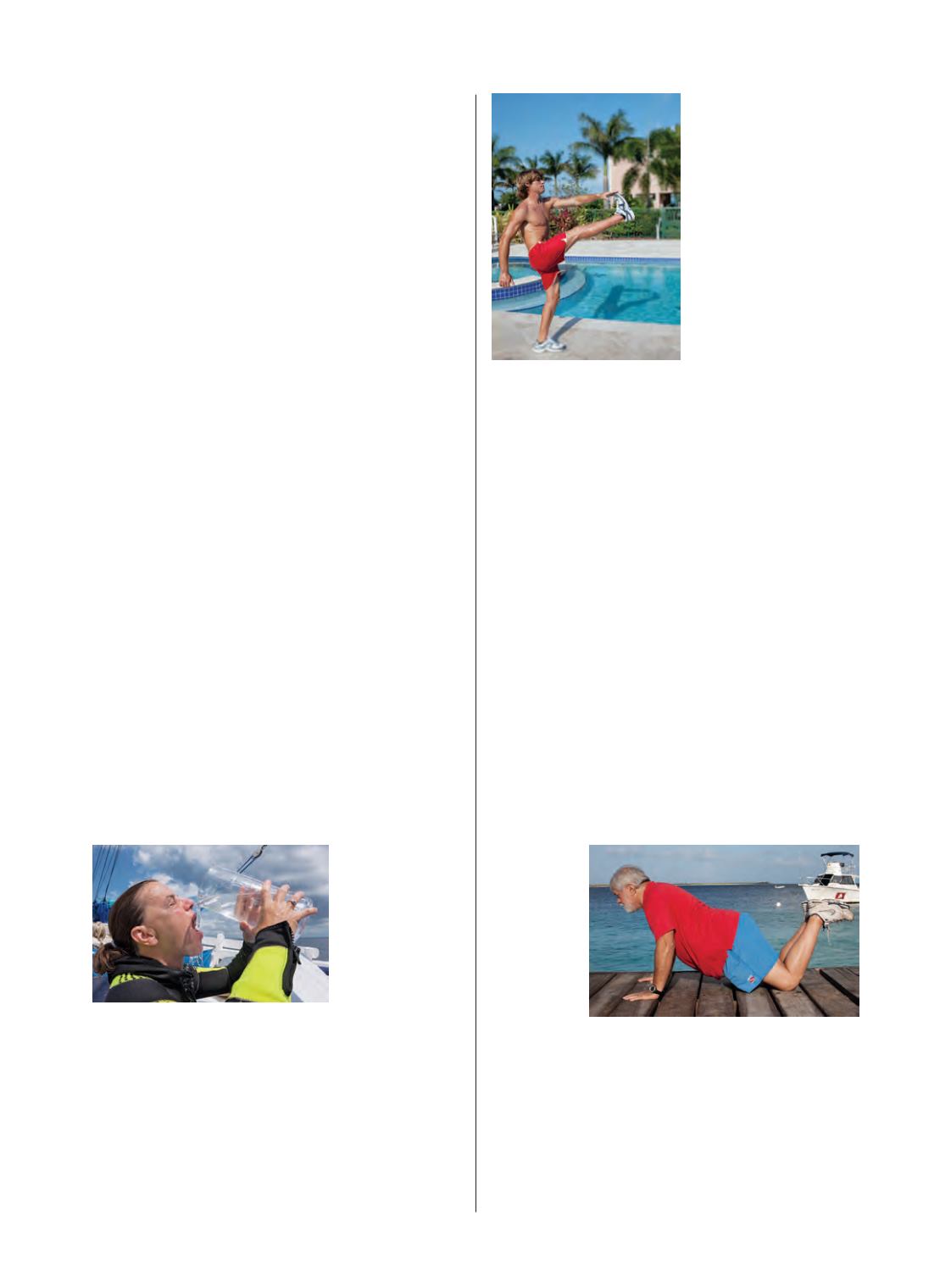

88
|
FALL 2016
Active heating garments can have legitimate value
but should be used thoughtfully. Warming should
never be greater than is needed, and divers should
consider a low or off setting early in the dive and a
gradual increase in warming during ascent. Caution
is required in increasing active heating during ascent
since gas solubility decreases in tissues as they warm,
potentially promoting bubble formation before blood
perfusion increases sufficiently to remove the gas.
Divers must also be aware that postdive warming
can increase DCS risk. Taking a hot shower or getting
into a hot tub will decrease the tissue solubility for
inert gas and can promote bubble formation.
Ultimately, divers need adequate warmth to preserve
clear thinking and physical performance, but they
should be mindful of the decompression hazards created
by thermal manipulation. For many divers passive
systems are adequate to maintain physical and cognitive
performance. Those who need or desire active warming
systems should be aware that those systems can increase
decompression stress even if they work correctly and
that they may substantially increase decompression
stress if they fail.
PREDISPOSITION
Predisposition is a catch-all category that includes
an array of personal factors that can influence
decompression stress. The impact of each may range
from negligible to substantial for a given individual
and/or dive. None of these parameters can currently
be quantified sufficiently to incorporate into
decompression algorithms. Understanding the potential
impact, however, can help divers manage their true risk.
State of
hydration.
Proper hydration
is important
for general and
diving health.
Dehydration can
increase the risk
of DCS, and hyperhydration can promote immersion
pulmonary edema. Practically, it is probably fair to say
that the diving community has sometimes focused too
much on dehydration as a risk factor in decompression
stress. This may arise from two realities. First, since fluid
shifts and indications of marked dehydration can be a
consequence of DCS, there can be some confusion over
cause and effect. Second is the human desire to find
something simple to blame.
Physical fitness.
Divers
should be physically
fit enough to meet the
normal demands of
diving with sufficient
reserve capacity to
handle emergency
situations. The higher
the level of physical
fitness, the lower the
relative strain of a
dive. Optimal body
composition reduces
the amount of ballast weight that has to be carried
to achieve neutral buoyancy and, in the case of an
obligatory postdive climb out, reduces the absolute
effort required. Limited data have associated higher
levels of physical fitness with reduced postdive bubble
formation and lower risk of DCS.
The biggest practical challenge typically arises
with efforts to schedule exercise around busy diving
schedules. While limited findings suggest that a single
bout of high-intensity exercise conducted 24 hours
before diving may have a protective effect, the data
concerning exercise closer to the start of diving are
fairly confusing. Exercise should probably be avoided
pre- and postdive where possible.
DCS history.
An individual’s history of DCS may
indicate a greater predisposition, either physiologically
or behaviorally. The importance of history may
also extend to a buddy since his or her actions can
influence the outcome of a shared activity.
Age.
The
impact of
increasing
age is
difficult to
assess since
it may be
confounded
with
reduced levels of physical fitness and changing
health and practices. Increasing age is associated
with increased bubble formation, and this potentially
indicates a reduced tolerance for decompression stress.
Sex.
There is no compelling evidence in the diving
literature to confirm that sex plays a role in the
development of DCS. This runs contrary to a limited
















